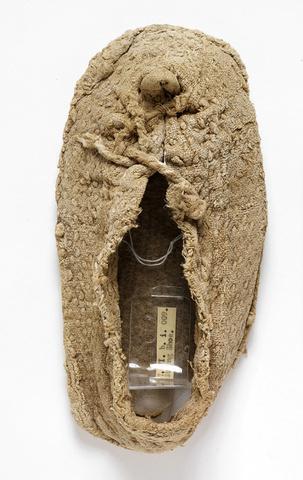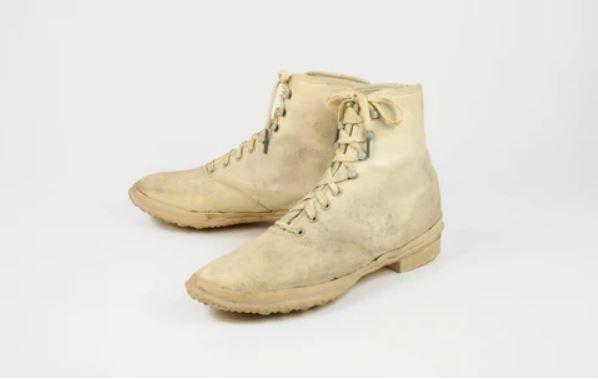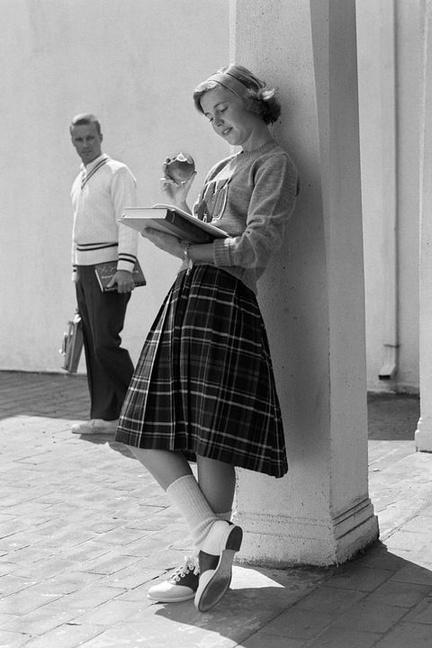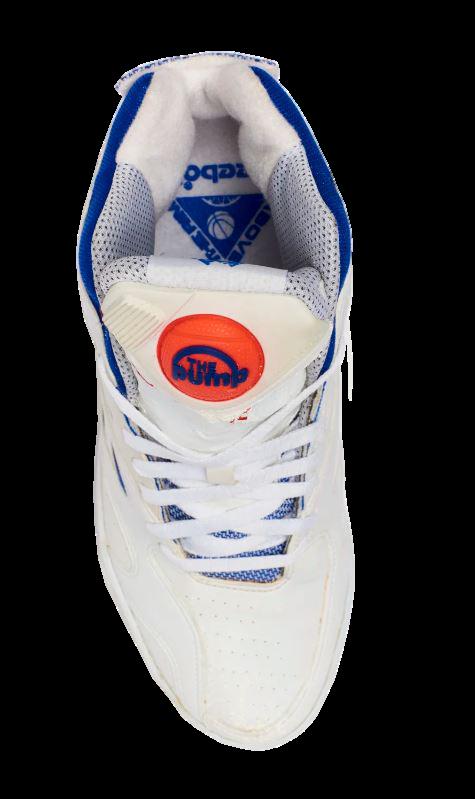Diffusion of Innovation A case study of
Sneakers
 By Shaily Parikh
By Shaily Parikh
DMGT 702 History and Interpretation of Innovation

 By Shaily Parikh
By Shaily Parikh
DMGT 702 History and Interpretation of Innovation
From a crude rubber soled Invention
To being a Sneaker culture
(In pop culture)
To the feet of celebrities and athletes worldwide Also being a popular sub-genre of fashion
Far beyond simply being a Utility
Travelers filled up shoes with Moss and Hemp for more comfort
Egyptians began making shoes from woven reeds


Charles Goodyear developed vulcanization - simpler to make rubber-soled shoes. Late 1800s


Wait Webster patented the process of fixing India rubber soles to shoes
A bunch of small rubber companies started making Plimsolls

Recognizing a Need or a Problem
Sand shoes frequently burst

Originally sold by the Liverpool Rubber Company and marketed as beachwear

Commercialization
Research and Develop Companies started adding a thinner rubber band for better support
Diffusion in Athletic Activities because of their grip and comfort
Military became their Early adopters with their standard physical kits and mementos
Diffusion and Adoption

Keds Shoes quickly recevied the nickname
Recognizing a Need or a Problem
Need of shoes in the American Market
Because they were so quiet that someone could easily sneak-out with them
Commercialization

Research and Development
This US Rubber company produced refined and mass produced version of canvas-rubber soled shoes


The Diffusion and Adoption of Sneakers gave rise to


An advertiser working for U.S. Rubber and Goodyear noted the shoes were silent when you walked, allowing you to "sneak" up on someone
Communication Channels
World's first high-top Basketball sneakers were introduced



U.S. Rubber and Sneaker gangs acting as change agents
"Sneaker gangs " of young hooligans started roaming the streets of NYC

Converse made its All-Star shoe the "signature shoe' of basketball player Chuck Taylor.

As part of the de countr Converse snea piece of A

Jesse Owens won four golds at the Berlin Olympics wearing shoes made by Rudolph and Adolph Dassler.


he brothers later split and formed two new companies: Puma and Adidas
Both being the prim casual snea
o r d a n s
Nike collaborated with Michael Jordan and gave birth to Air Jordan

For a kid, it was saber from Star W p This collaborati lands

Notice a common pattern in all of these events ?
Channels
Mass Media
Channels
Interpersonal Channels

Basketball players acting as change agents
Sneakers became wildly popular among young fans

Basketball players acting as change agents
Innovation
Communication Channels
Time
Social System
Innovation
Decision Process
Knowledge
Persuasion
Decision
Implementation
Confirmation
Reinvention
Athletic shoes were used by competing athletes at the Olympics, helping to popularize athletic shoes among the general public

Athletic shoes were used by competing athletes at the Olympics, helping to popularize athletic shoes among the general public
Kids in the inner cities called sneakers “limousines for the feet” because of their popularity and comfort
Young boys lined up to buy sneakers endorsed by athletes
Athletic shoes were used by competing athletes at the Olympic helping to popularize athletic shoe among the general public
Kids in the inner cities called sneakers “limousines for the feet” because of their popularity and comfort

Young boys lined up to buy sneakers endorsed by athletes
Athletic shoes were used by competing athletes at the Olympics, helping to popularize athletic shoes among the general public
Leisure opportunities greatly expanded, and people began to wear sneakers as dress codes relaxed
Kids in the inner cities called sneakers “limousines for the feet” because of their popularity and comfort

Young boys lined up to buy sneakers endorsed by athletes
Athletic shoes were used by competing athletes at the Olympics, helping to popularize athletic shoes among the general public
Leisure opportunities greatly expanded, and people began to wear sneakers as dress codes relaxed
Sneaker sales began to adversely affect the sales of conventional leather shoes, leading to a fierce advertising war for market share
Kids in the inner cities called sneakers “limousines for the feet” because of their popularity and comfort
Trying to make lighting strike twice, competing companies like Reebok and Adidas tried to recreate the aesthetic of the Air Jordan, even mixing in exotic colors, developing new comfort technologies like ‘the pump’ that would fill your sneaker with air for a better fit.

Rate of Adoption
Degrees of Diffusion
Relative Advantage
Compatibility
Complexity
Trialability
Observability
From Utility - to a Fashion symbol, Social status and an entire Culture
Sneakers was highly compatible and comfortable when the outdoor activities increased
Relative Advantage
Complexity
People found sneakers very easy to use as technology advanced
Complexity
Mass production of Sneakers by every small and large companies increased their supply in the market
Relative Advantage
Compatibility
Trialability
Relative Advantage
Complexity
'Sneaker Trends' decade after decade increased the observability of the innovation
Observability
Jogging and other outdoor activities became popular by the 1970s, helping shoemakers sell sneakers to more than just Athletes

Sneakers started becoming a status symbol among celebrities as well as general public which shaped their social circles

Technological advances triggered the diffusion of sneakers on a great level where every brand wanted to add a new technology in their sneakers

Cultural
Hip Hop and Rock&Roll cultures used Sneakers as their go-to casual footwear

People started including Sneakers in day-to-day attire
Formation of Sneaker gangs
Sneakers in school dress codes
"Sneakerheads" started collecting Sneakers and Sneaker-collection became popular by day

Sneakers became Staples for Modern fashion

Celebrities signing multi-million dollar deals with Sneaker companies


Companies like Nike, Under Armour, Xiomi are coming up with Smart Shoes



